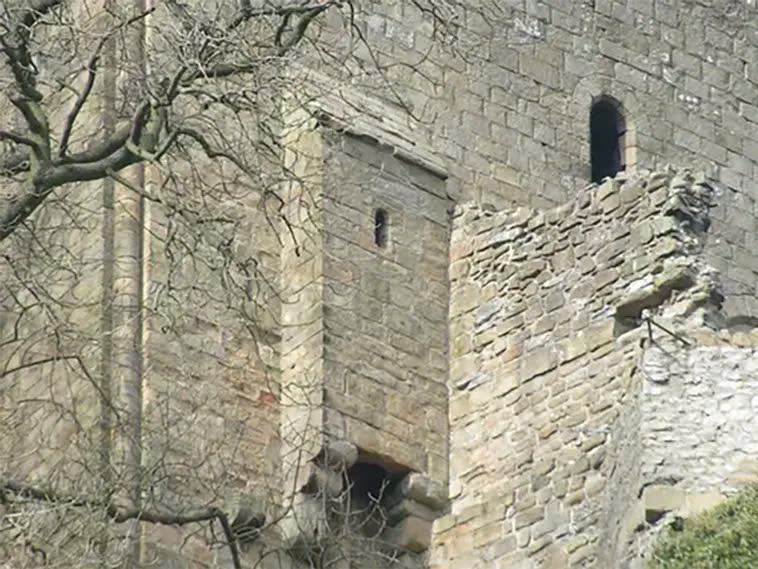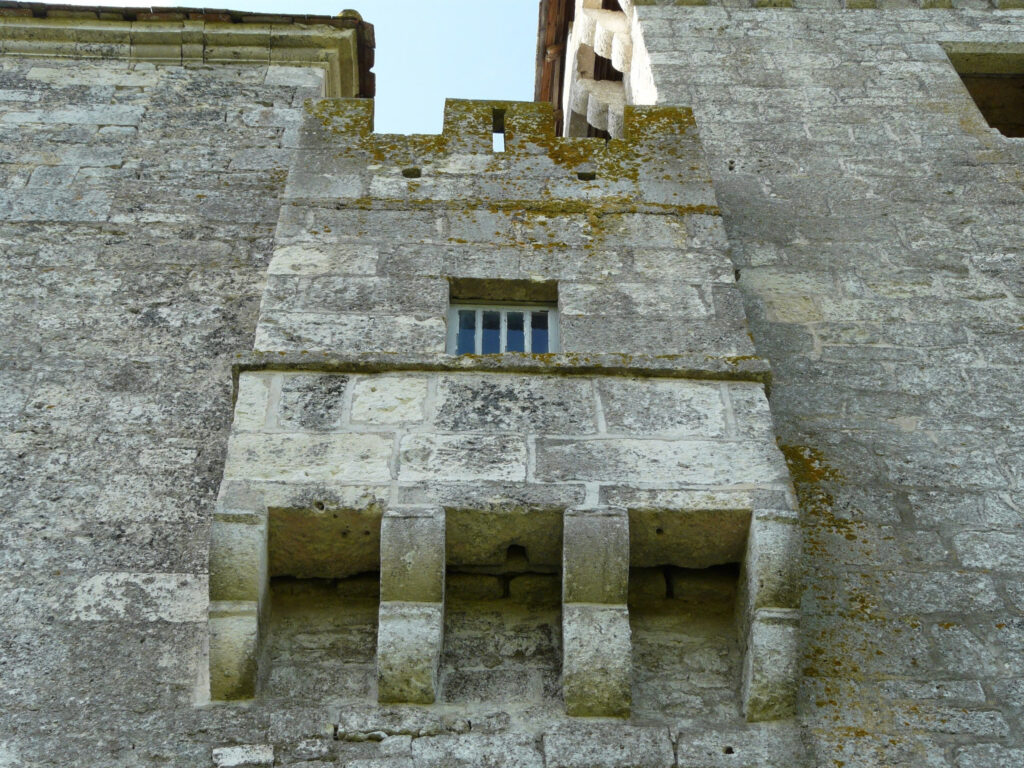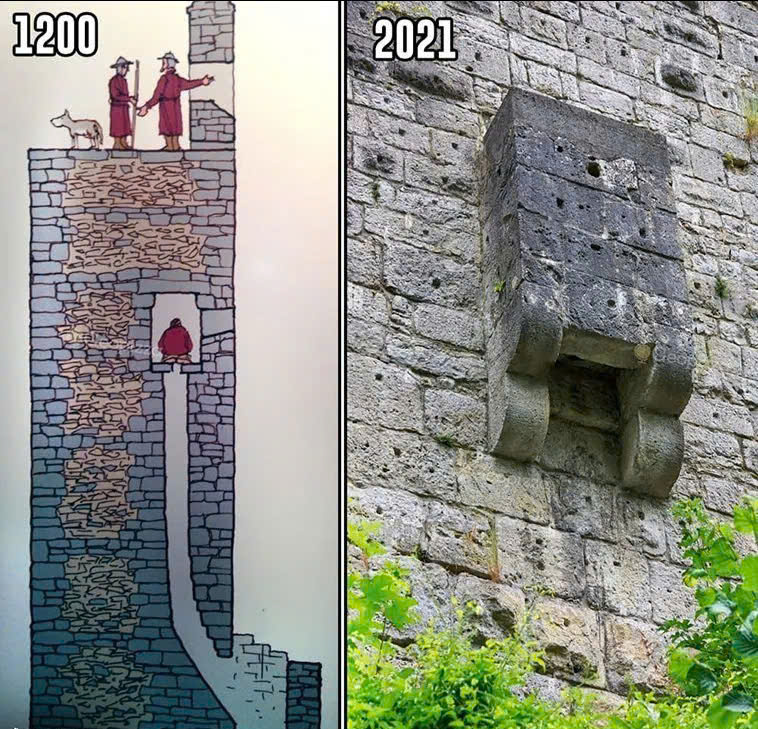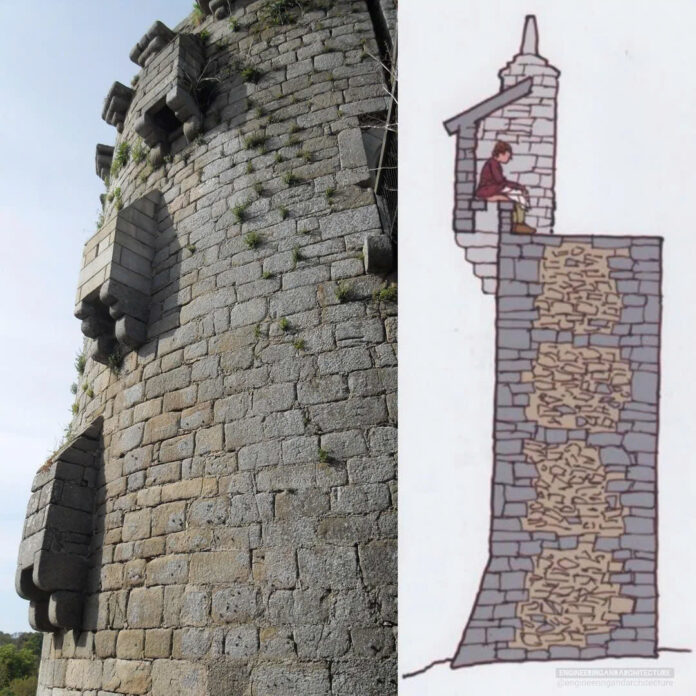In the shadow of towering stone walls and beneath the watchful gaze of sentries, medieval castle engineers were solving a problem as old as human civilization itself: waste disposal. While the rest of medieval society made do with crude facilities, castle designers created sophisticated systems that balanced practicality with the unique challenges of fortress living.
The Garderobe: More Than Just a Toilet
The medieval toilet, known as a “privy” or “garderobe,” remains one of the most recognizable features in castle ruins today. These distinctive structures protrude from exterior walls, visible reminders of medieval ingenuity. Interestingly, the term “garderobe” eventually evolved to mean “wardrobe” in French, a linguistic shift rooted in the compact dimensions of these necessary chambers.

Castle toilets weren’t lavish affairs—space was always at a premium in defensive structures. Yet compared to their counterparts in villages and towns, castle facilities represented the height of medieval sanitation engineering, offering users a modicum of privacy and relative comfort.
Engineering Solutions for Waste Management
Clever Placement and Design
Medieval architects positioned toilets with remarkable ingenuity. Most were built directly into castle walls, projecting outward on corbels (supporting brackets). This design created a natural disposal system where waste could fall directly into the castle moat below. Other castles positioned their latrines over rivers for immediate disposal, while some fortresses situated on higher ground took advantage of cliff faces for waste elimination.

In more complex designs, castle engineers created tiers of toilets on exterior walls, with waste shafts converging at a common collection point. Ground-floor facilities used stone drainage channels to direct waste away from living quarters. Far from being wasted, this material was often collected by local farmers, who valued it as fertilizer for their fields.
Practical Interiors with Surprising Comforts
From inside the castle, toilets were typically set in recesses or mural chambers. Privacy was achieved through short, narrow passageways, often featuring right-angle turns. Shared facilities weren’t uncommon—pairs of toilets separated by a thin wall might share a common waste chute.

The toilet seat itself consisted of a wooden bench with a rectangular or keyhole-shaped aperture positioned over the shaft hole. As castle luxury increased during the 14th century CE, so did the number and quality of these facilities. High-ranking residents like the lord and priest often enjoyed private latrines, complete with chamber pots for nighttime use.
Video
Hygiene and Hazards
Despite their primitive nature, castle toilets incorporated surprising hygiene features. Windows—unlike other castle openings—were often left unshuttered to promote ventilation. Floors might be scattered with rushes, aromatic herbs, and flowers to mask odors and deter vermin. Some facilities even featured whitewashed walls coated with lime-plaster, which maximized limited light while killing bacteria.

Yet these facilities weren’t without risk. The hay, grass, or moss used as medieval toilet paper could catch fire from candles or torches. More alarmingly, there was always the danger of falling through the shaft—a perilous prospect, especially in structures where waste shafts extended great distances down exterior walls.
A Testament to Medieval Innovation

The humble castle toilet remains a testament to medieval problem-solving. While modern visitors might chuckle at these rudimentary facilities, they represent remarkable engineering achievements that balanced hygiene needs with the defensive requirements of castle life. Today, these protruding structures stand as silent witnesses to the practical challenges of daily life in medieval strongholds—reminders that even in the age of knights and nobles, innovation often arose from the most basic human necessities.

